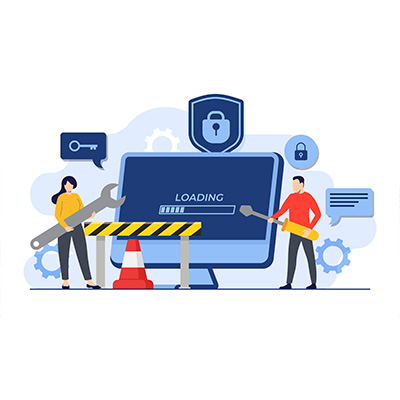Viruses and malware are bad. Ransomware is crippling. Data breaches in some cases can more or less shut down a business. We talk about these threats all the time, but for most people, they are just scary-sounding buzzwords. Today, we want to talk about the more personalized threats that are much more cunning, and in some ways, much more dangerous.
The right collaboration tools can be game-changing for business, but only if they are appropriately configured and integrated with intention into your infrastructure. Today, we are bringing you four common mistakes that businesses make with their collaboration tool security that could hold you back from getting the most from our solutions.
I was thinking about a funny tech support issue I ran into many years ago, and thought it would be fun to share it with everyone. All names have been changed to protect the innocent. If you’ve ever had to spend hours chasing down the root of a problem, only to find that it was the dumbest thing possible, you’ll probably relate to this!
There are challenges that go with running any business. Some of the most common come from unhappy employees. If you understand some of the most common complaints that today’s worker may make, you can proactively ward against them and create a happier and more productive workplace. Let’s take a look at five of the most common employee complaints in today’s workplace and what you can do about them.
Data is what makes your business function, and if you’re not careful, you might find yourself without it due to a hardware failure, malware attack, or even human error. You need to maintain and implement a powerful data backup solution to ensure that your business can bounce back following a disaster, and this platform should keep your data as safe and accessible as possible in the process. Here’s how you can implement such a solution.
Delegation is something that you, as the leader of your organization, need to master in order to get the most efficiency out of yourself and your team. There are various ways to handle delegation, all with their strengths and flaws. We’re here today to help you figure out your own personal management style and how technology can help you carry it out.
It isn’t uncommon for businesses to engage in actions that seem to directly contradict their own best interests. This is called self-sabotage, and it can be a costly and extremely debilitating phenomenon for a business. Let’s go through some of the actions that may be holding your business back, even if you don’t realize it.
Your technology is essential to your business remaining efficient and your employees remaining productive. Unfortunately, this technology will fail at some point. By adopting proactive strategies, businesses can ensure the longevity and smooth functioning of their IT infrastructure. In this blog post, we will explore how proactive management of IT can keep it running longer, resulting in increased efficiency and cost savings.
Your business might depend on technology, but if it’s not managed properly, this dependence can become a detriment. Small businesses in particular must be aware of several challenges specific to their technology infrastructures. Let’s examine three of the most common culprits for your company’s technological troubles and what you can do about them.
In recent years, the Internet of Things (IoT) has emerged as a game-changer across various industries. One way that businesses can utilize these technologies is to understand how their businesses use their utilities as well as automate the control of some of them to cut costs and utilize these resources more efficiently. Let’s look at how businesses are using IoT tools to stabilize utility costs.










